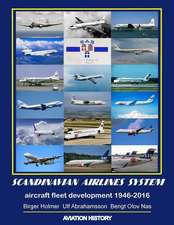Rocketing Into the Future: The History and Technology of Rocket Planes: Springer Praxis Books
Autor Michel van Pelten Limba Engleză Paperback – 31 mai 2012
Michel van Pelt considers future spaceplanes, presenting various modern concepts and developments. He describes the development from cutting edge research via demonstrator vehicles to operational use. He also evaluates the replacement of the Space Shuttle with a seemingly old-fashioned capsule system, the parallel developments in suborbital spaceplanes such as SpaceShipOne and SpaceShipTwo, piloted versus automatic flight, and related developments in airliners and military aircraft.
Din seria Springer Praxis Books
-
 Preț: 294.46 lei
Preț: 294.46 lei -
 Preț: 223.45 lei
Preț: 223.45 lei -
 Preț: 193.12 lei
Preț: 193.12 lei -
 Preț: 167.85 lei
Preț: 167.85 lei -
 Preț: 288.98 lei
Preț: 288.98 lei -
 Preț: 323.74 lei
Preț: 323.74 lei -
 Preț: 401.38 lei
Preț: 401.38 lei -
 Preț: 264.12 lei
Preț: 264.12 lei - 8%
 Preț: 513.00 lei
Preț: 513.00 lei -
 Preț: 190.01 lei
Preț: 190.01 lei -
 Preț: 218.16 lei
Preț: 218.16 lei -
 Preț: 312.06 lei
Preț: 312.06 lei - 17%
 Preț: 414.05 lei
Preț: 414.05 lei -
 Preț: 216.41 lei
Preț: 216.41 lei -
 Preț: 262.27 lei
Preț: 262.27 lei -
 Preț: 264.35 lei
Preț: 264.35 lei -
 Preț: 167.63 lei
Preț: 167.63 lei -
 Preț: 284.81 lei
Preț: 284.81 lei -
 Preț: 259.08 lei
Preț: 259.08 lei -
 Preț: 305.47 lei
Preț: 305.47 lei -
 Preț: 244.14 lei
Preț: 244.14 lei -
 Preț: 227.85 lei
Preț: 227.85 lei -
 Preț: 285.25 lei
Preț: 285.25 lei -
 Preț: 295.56 lei
Preț: 295.56 lei -
 Preț: 357.17 lei
Preț: 357.17 lei -
 Preț: 275.79 lei
Preț: 275.79 lei -
 Preț: 257.08 lei
Preț: 257.08 lei -
 Preț: 349.71 lei
Preț: 349.71 lei -
 Preț: 272.45 lei
Preț: 272.45 lei -
 Preț: 270.27 lei
Preț: 270.27 lei - 8%
 Preț: 456.51 lei
Preț: 456.51 lei -
 Preț: 352.34 lei
Preț: 352.34 lei - 8%
 Preț: 394.80 lei
Preț: 394.80 lei -
 Preț: 320.65 lei
Preț: 320.65 lei -
 Preț: 325.29 lei
Preț: 325.29 lei -
 Preț: 253.11 lei
Preț: 253.11 lei -
 Preț: 192.86 lei
Preț: 192.86 lei -
 Preț: 313.40 lei
Preț: 313.40 lei -
 Preț: 150.51 lei
Preț: 150.51 lei -
 Preț: 233.34 lei
Preț: 233.34 lei -
 Preț: 286.78 lei
Preț: 286.78 lei -
 Preț: 212.01 lei
Preț: 212.01 lei -
 Preț: 366.83 lei
Preț: 366.83 lei -
 Preț: 299.99 lei
Preț: 299.99 lei -
 Preț: 232.27 lei
Preț: 232.27 lei -
 Preț: 284.58 lei
Preț: 284.58 lei -
 Preț: 212.45 lei
Preț: 212.45 lei -
 Preț: 159.81 lei
Preț: 159.81 lei -
 Preț: 349.48 lei
Preț: 349.48 lei - 20%
 Preț: 2061.64 lei
Preț: 2061.64 lei
Preț: 350.58 lei
Nou
Puncte Express: 526
Preț estimativ în valută:
67.09€ • 72.85$ • 56.36£
67.09€ • 72.85$ • 56.36£
Carte disponibilă
Livrare economică 01-15 aprilie
Preluare comenzi: 021 569.72.76
Specificații
ISBN-13: 9781461431992
ISBN-10: 1461431999
Pagini: 384
Ilustrații: XVIII, 366 p. 162 illus., 60 illus. in color.
Dimensiuni: 168 x 240 x 25 mm
Greutate: 0.86 kg
Ediția:2012
Editura: Springer
Colecția Springer
Seriile Springer Praxis Books, Space Exploration
Locul publicării:New York, NY, United States
ISBN-10: 1461431999
Pagini: 384
Ilustrații: XVIII, 366 p. 162 illus., 60 illus. in color.
Dimensiuni: 168 x 240 x 25 mm
Greutate: 0.86 kg
Ediția:2012
Editura: Springer
Colecția Springer
Seriile Springer Praxis Books, Space Exploration
Locul publicării:New York, NY, United States
Public țintă
Popular/generalCuprins
Illustrations.- Author's preface.- Chapter 1: Introduction.- Chapter 2: A crash course in rocket plane design.- Chapter 3: Germany's wonder weapons.- Chapter 4: Non-German wartime rocket fighters.- Chapter 5: The rise and fall of the rocket interceptor.- Chapter 6: Breaking the barrier.- Chapter 7: Rocket plane spaceflight.- Chapter 8: Future spaceplanes.- Chapter 9: Joyriding a rocket plane.- Chapter 10: Man versus robot.- Chapter 11: Conclusions.- Appendix: Aircraft maximum velocity and altitude evolution.- Bibliography.- Index.
Recenzii
From the reviews:
“Whatever level of interest you have in rocket-powered human aviation (and hence spaceflight), this book covers it. For someone getting into the subject for the first time there is more than enough detail … . the book gives the basics of aeronautics and rocketry, which are well-explained with some helpful line diagrams. … British Interplanetary Society members are no doubt familiar with Skylon; if you are not you will be once you have read this book!” (Malcolm Smith, Astronomy Now, July, 2013)
“This book covers the history of rocket planes from earliest endeavors to the present designs of suborbital rocket planes marketed for space tourism purposes. … The book is well written, well organized, and well illustrated. A useful resource for people interested in both aviation history and the history of space technology. Summing Up: Highly recommended. All readership levels.” (A. M. Strauss, Choice, Vol. 50 (4), December, 2012)
“Whatever level of interest you have in rocket-powered human aviation (and hence spaceflight), this book covers it. For someone getting into the subject for the first time there is more than enough detail … . the book gives the basics of aeronautics and rocketry, which are well-explained with some helpful line diagrams. … British Interplanetary Society members are no doubt familiar with Skylon; if you are not you will be once you have read this book!” (Malcolm Smith, Astronomy Now, July, 2013)
“This book covers the history of rocket planes from earliest endeavors to the present designs of suborbital rocket planes marketed for space tourism purposes. … The book is well written, well organized, and well illustrated. A useful resource for people interested in both aviation history and the history of space technology. Summing Up: Highly recommended. All readership levels.” (A. M. Strauss, Choice, Vol. 50 (4), December, 2012)
Notă biografică
For the last ten years, Michel Van Pelt has been working as a cost engineer, system engineer and as Concurrent Design Facility team leader for the technical center of the European Space Agency ESA in the Netherlands. He is involved in many ESA space projects during many phases, which has given him a uniqe insight in the definition, conceptual design, development, launch and operation of spacecraft. Specifically, through hiswork in ESA's Concurrent Design Facility for conceptual design studies, Van Pelt has a deep understanding of the various scientific, technical, financial and political issues and constraints that drive the development of spacecraft, as well as a broad knowledge of innovative ideas for future launchers and space missions.
Van Pelt has written many articles on space and is an editor and writer for two Dutch spaceflight magazines. In addition, he regularly does presentations on space related topics for student associations etc. He has three books published through Springer/Praxis: "Space Tourism: Adventures in Earth Orbit and Beyond" (2005), "Space Invaders: How Robotic Spacecraft Explore the Solar System" (2006), and "Space Tethers and Space Elevators" (2009).
Van Pelt has written many articles on space and is an editor and writer for two Dutch spaceflight magazines. In addition, he regularly does presentations on space related topics for student associations etc. He has three books published through Springer/Praxis: "Space Tourism: Adventures in Earth Orbit and Beyond" (2005), "Space Invaders: How Robotic Spacecraft Explore the Solar System" (2006), and "Space Tethers and Space Elevators" (2009).
Textul de pe ultima copertă
Rocketing into the Future journeys into the exciting world of rocket planes, examining the exotic concepts and actual flying vehicles that have been devised over the last one hundred years. Lavishly illustrated with over 150 photographs, it recounts the history of rocket planes from the early pioneers who attached simple rockets on to their wooden glider airplanes to the modern world of high-tech research vehicles.
The book then looks at the possibilities for the future. The technological and economic challenges of the Space Shuttle proved insurmountable, and thus the program was unable to fulfill its promise of low-cost access to space. However, the burgeoning market of suborbital space tourism may yet give the necessary boost to the development of a truly reusable spaceplane.
The book then looks at the possibilities for the future. The technological and economic challenges of the Space Shuttle proved insurmountable, and thus the program was unable to fulfill its promise of low-cost access to space. However, the burgeoning market of suborbital space tourism may yet give the necessary boost to the development of a truly reusable spaceplane.
Caracteristici
Presents the technical as well as economic challenges related to spaceplane development Looks at rocket planes in fiction and popular culture and discusses how realistic these have been in terms of design, size, performance, and maneuverability in space Describes in an engaging and clear way how rockets and aircraft work while pointing out the most important features of today's advanced rocket planes

















